France's Cave of Forgotten Dreams has earliest depiction of volcano eruption - why are they absent from early art?
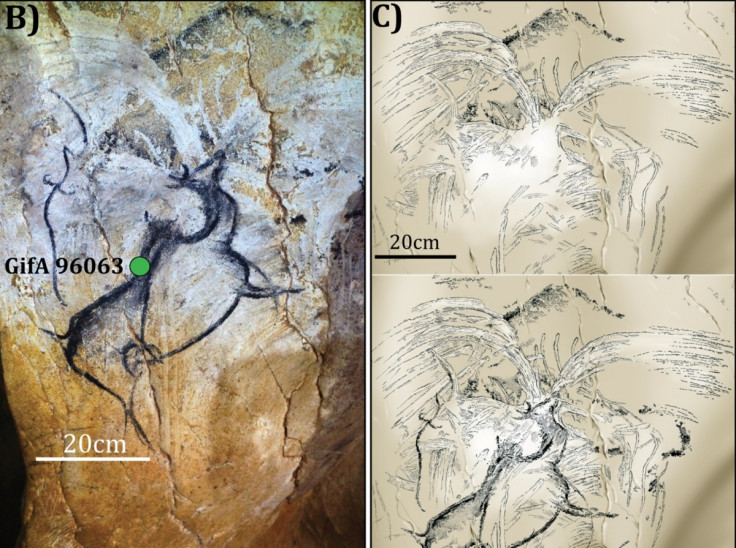
Drawings in France's famous 'Cave of Forgotten Dreams' appear to show a volcanic eruption, researchers have said. If correct, it would be the earliest depiction of a volcano erupting ever discovered, dating back 36,000 years.
A team of researchers led by Sebastien Nomade, a geoscientist at the University of Paris-Saclay, analysed images in the Chauvet caves in southern France – one of the world's oldest and most impressive sites of cave art. The cave was famously the subject of a 2010 Werner Herzog film following its discovery in 1994.
"Volcanic eruptions are among the most impressive geological events on the surface of the earth," they said. "It is interesting to notice, however, that the oldest testimony of such an event in human history dates back only to about 9,000 years."
Few depictions of eruptions
The Çatalhöyük mural in Turkey was discovered in 2014 and depicts the Hasan Dağı twin-peaks volcano. It appears to show the volcano in the distance and a birds-eye view of a town plan. Rock samples showed eruptions would have taken place around the same time the mural was made. "Geologic and geochronologic lines of evidence thus support previous interpretations that residents of Çatalhöyük artistically represented an explosive eruption of Hasan Dağı volcano," scientists wrote in PLOS One.
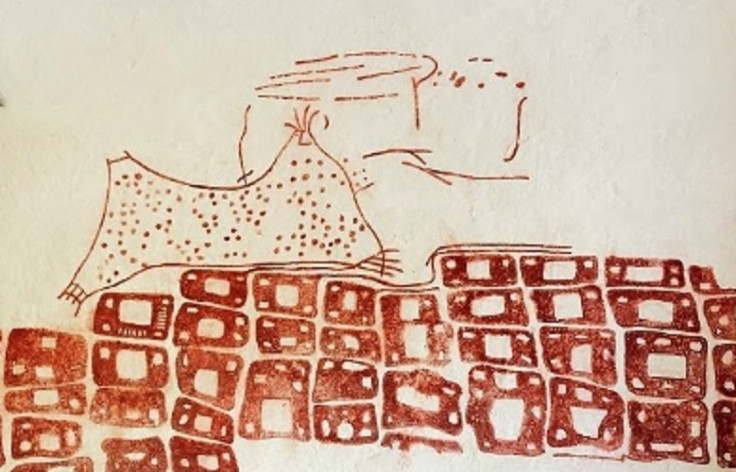
The second oldest depiction was found in Armenia and dates back 7,000 years. A group of six petroglyphs portray the eruption of the Porak volcano.
Legends about volcanoes permeate ancient mythology in every culture located near to eruptions. The ancient Greeks and Romans both explained volcanoes as being sites of gods. Fast forward slightly and you get Hawaiian mythology and the goddess Pele.
One of the first descriptions of an eruption is found in a letter from 79AD. Pliny the Younger described the eruption of Vesuvius – which killed his uncle – writing: "Its general appearance can best be expressed as being like an umbrella pine, for it rose to a great height on a sort of trunk and then split off into two branches, I imagine because it was thrust upward by the first blast and then left unsupported as the pressure subsided, or else it was borne down by its own weight so that it spread out and gradually dispersed," the letter said. "Sometimes it looked white, sometimes blotched and dirty, according to the amount of soil and ashes it carried with it."
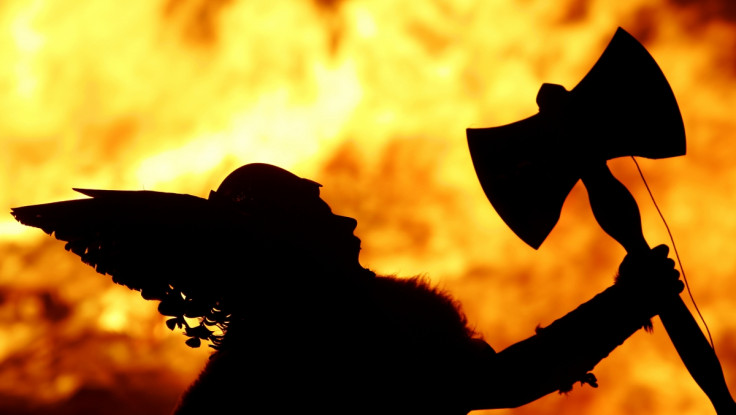
It is also thought volcanic eruptions inspired the Norse legend of Ragnarok (the Viking apocalypse). Some experts have suggested that when they first arrived in Iceland in the ninth century, they would have – for the first time – seen volcanic eruptions. And that this experience would have been pretty petrifying.
But humans had been around for far longer – so why there are few depictions of them, and none confirmed from earlier, is very perplexing.
France's Chauvet cave
Around 340 caves with Palaeolithic art have been discovered in Europe, with the oldest dating between 40,000 and 36,000 years back. This coincides with the arrival of modern humans to the area. Normally, cave art produced by these early people depict wild animals, mostly herbivores, and human representations.
"So far, and despite the large number of caves studied since the early 19th century, no painting, petroglyphs or engravings depicting natural scenery or geological phenomena from the Upper Paleolithic period have been found in Europe," the team wrote in the journal PLOS One about the latest find in France.
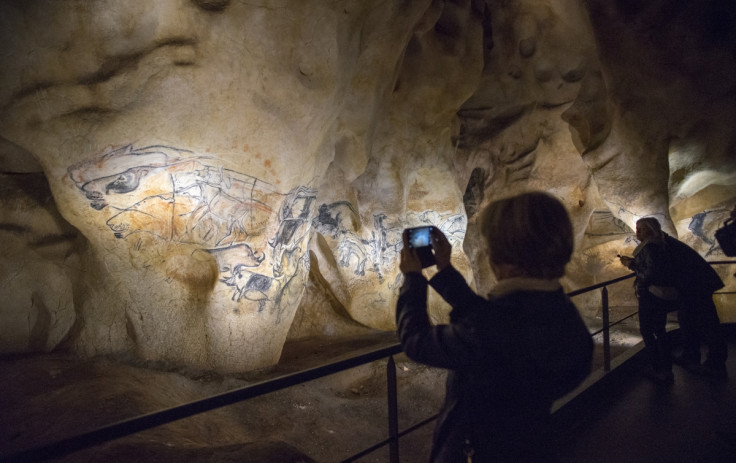
However, they now say one particularly peculiar cave drawing showing spray shapes could be that of a volcano erupting. "Volcanic eruptions are among the most impressive geological events on the surface of the earth. It is interesting to notice, however, that the oldest testimony of such an event in human history dates back only to about 9 ka [9,000 years]," they said.
To find out if the Chauvet-Pont d'Arc cave did indeed represent a volcanic eruption, researchers looked for nearby volcanoes that would have been active around the same time the drawing was made. And findings showed there was indeed volcanic activity just 35km from the cave – that would have been visible from the hills above its entrance.
They say the "distinctive design" is reminiscent of lava fountains associated with strombolian eruptions – the same type of eruption that would have taken place near the cave. They said that while there are some uncertainties over the dates of the eruptions, there is "strong evidence" that volcanic activity would have coincided with human occupation of the region.
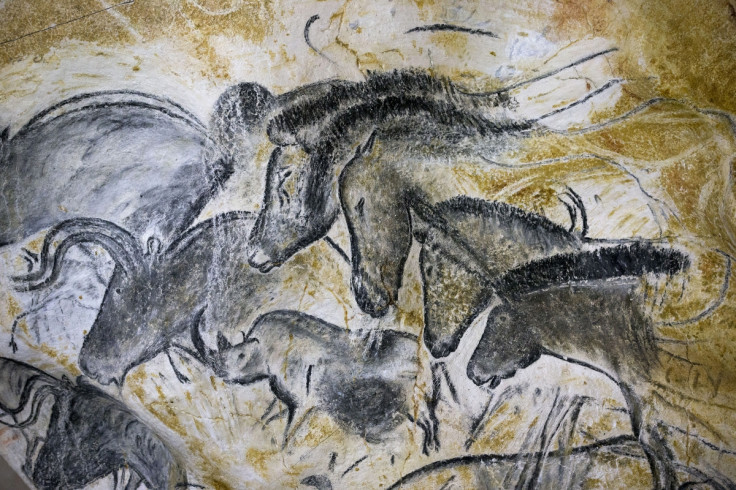
"Spray-shape signs specific to this cave art are dated between 36.7 and 34.1 ka... overlapping the age of the local volcanic activity," they wrote, adding that the Megaloceros panel appearing to show an eruption can be separated out into four chronological phases. The first involved drawings, the second cave bear marks, the third where the spray shapes were engraved and finally where the spray is partially covered by another drawing made with charcoal.
"We propose that humans are likely to have witnessed one or several eruptions and depicted them using these complex signs. If this hypothesis is correct, these depictions predate by over 34 millennia the observation by Pliny the Younger of the AD 79 Vesuvius eruption and by 28 ka the Çatalhöyük mural, currently considered the oldest eruption painted by a human hand."
The lack of depictions of volcanoes in early human history could be to do with them being difficult to draw. Or they may not have been viewed by people who were moving around a lot all that often. But it could be that they did – and we will find more in the future.
Speaking to Nature magazine, Michael Petraglia, an archaeologist at the University of Oxford who was not involved in the research, said the study offers good evidence that the cave drawing shows an eruption – and that the lack of depictions currently known could be because they are yet to be discovered.
"I think they make a pretty good case that it's potentially a depiction of the kind of volcano that one sees on the landscape. Maybe there's more of this out there than we have realised."
© Copyright IBTimes 2025. All rights reserved.






















